“Old 16” Tin Art and the Unique Automobiles of the Lane Motor Museum in Nashville
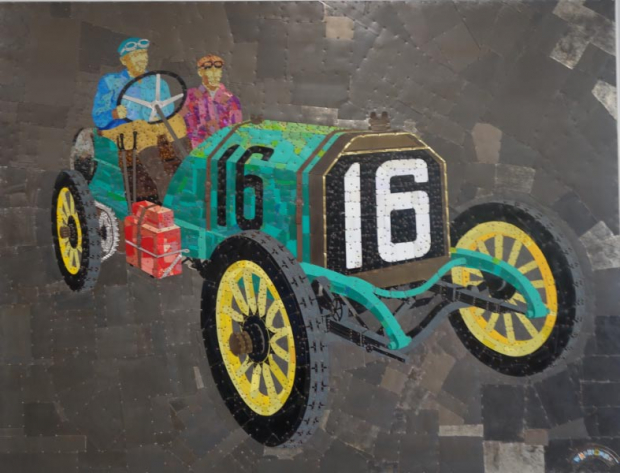
A recent visit to Nashville provided a wonderful opportunity to visit the Lane Motor Museum and the spectacular "Old 16" tin can artwork by artist David Wasserman.
As a special treat, I was accompanied by the artist's son Steven Wasserman and received a special tour by the museum owner Jeff Lane.
Thanks Steven and Jeff for a wonderful day.
Enjoy,
Howard Kroplick
Lane Motor Museum
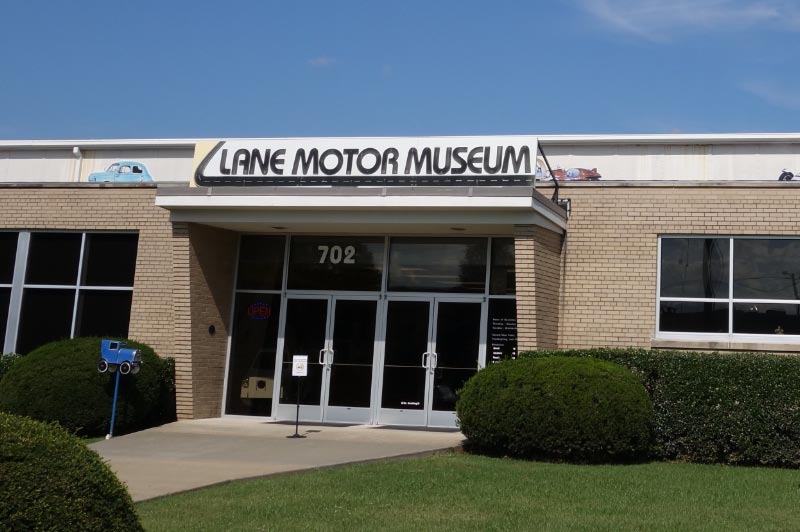
In 2002, Jeff Lane established Lane Motor Museum. Jeff has been an automotive enthusiast since an early age. He began restoring his first car—a 1955 MG TF—when he was a teen. His personal collection was the donation that began the foundation. Lane Motor Museum unveiled its collection to the public in October of 2003. As director, Jeff Lane continues to search out cars for the collection that are technically significant or uniquely different.
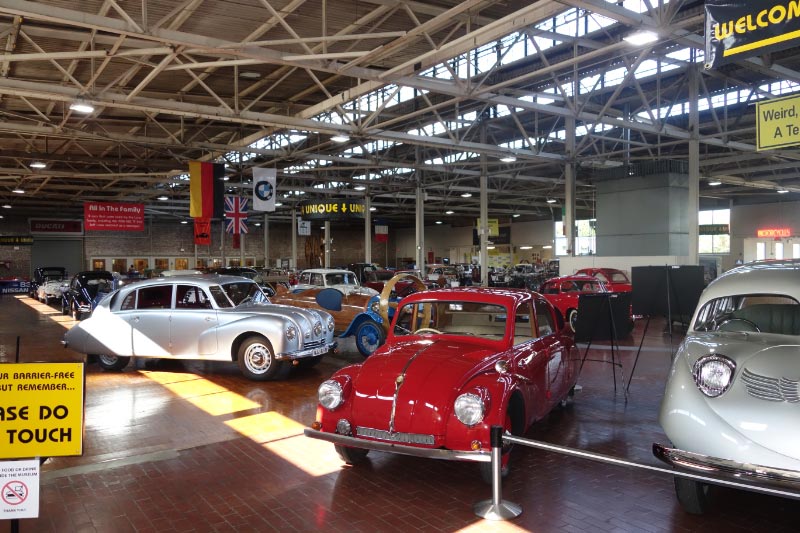
The goal of Lane Motor Museum is to share in the mission of collection and preserving automotive history for future generations.
"Old 16" Tin Art by David Wasserman
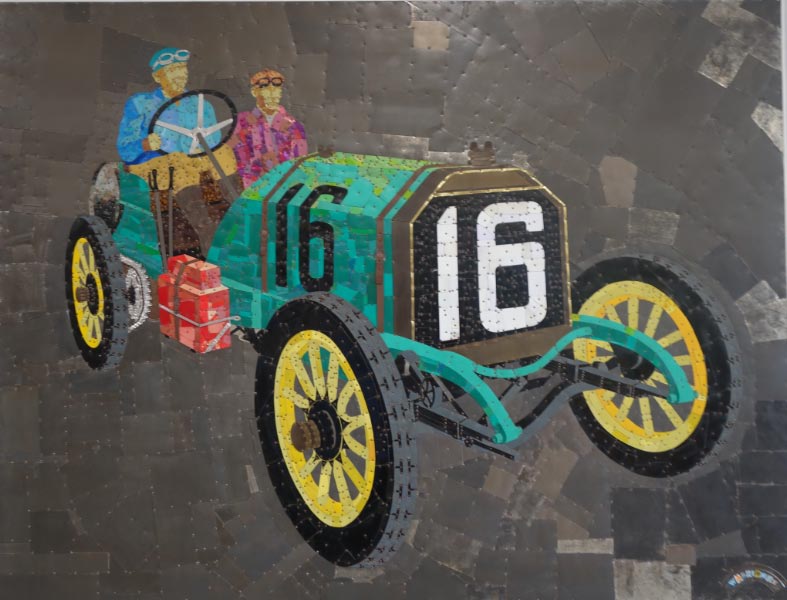
One of the most unusual works of Vanderbilt art is this tin can piece hanging in the lobby of the Lane Motor Museum by artist David Wasserman (1917-1999).
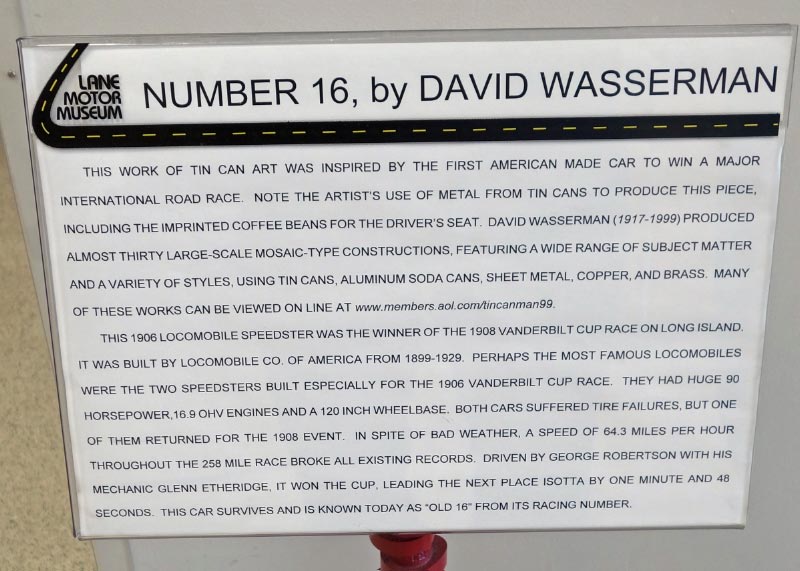
Amazingly, after initally posting this artwork in 2009, I discovered that David Wasserman's grandson is married to my wife's cousin's daughter. Moreover, the family homes of the Wassermans and the Kroplicks were less than one mile apart in East Meadow, New York.
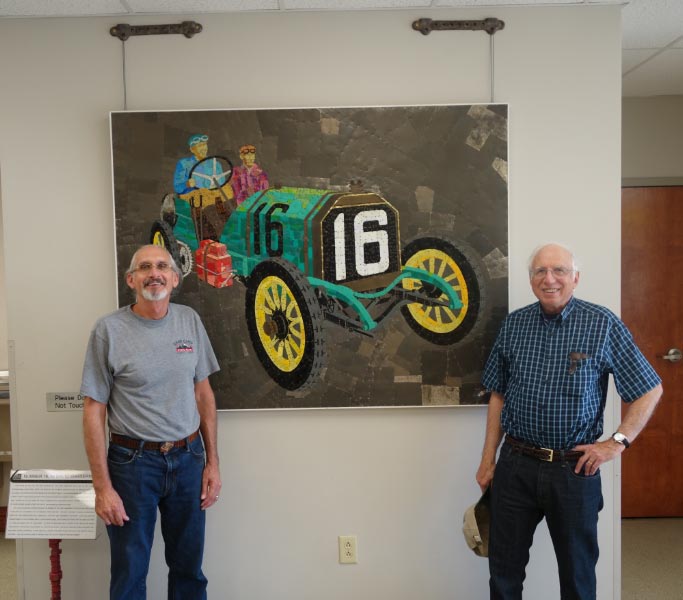
Museum owner Jeff Lane (left) and Steven Wasserman, the son of artist David Wasserman, in front of "Old 16".
The Amazing and Wacky Cars of the Lane Motor Museum
1932 Helicron
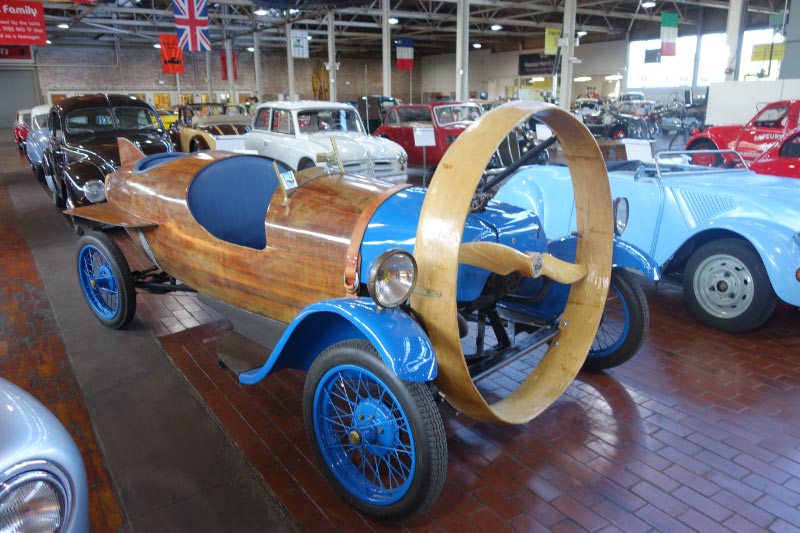
Constructed in 1932, this one-of-a-kind, propeller driven car was discovered in a barn in France in 2000 having been placed there by the original owner in the late 1930s. Little could be seen of it through the rubble. It was completely rebuilt but many of the mechanical components are original, such as the frame, wire wheels, dashboard, steering wheel, steering gear, brake pedal, light switch, headlights, and the type plate.
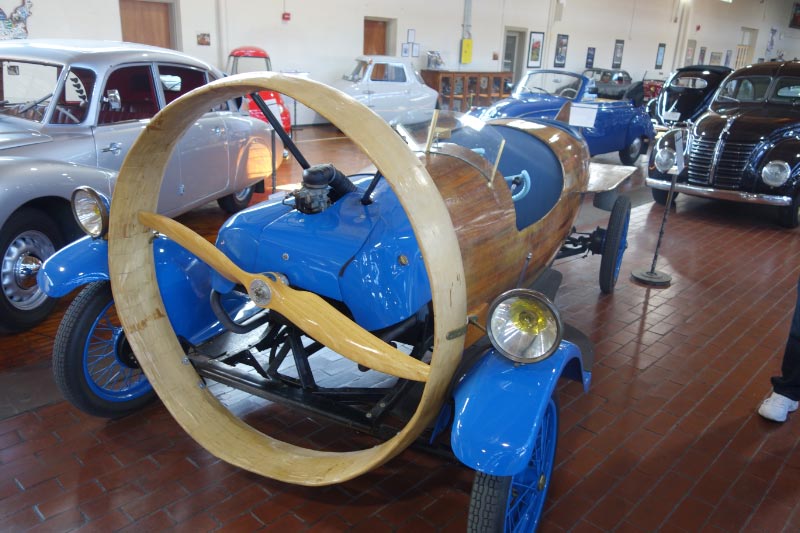
The wood frame was sandblasted and treated, the steering gear was rebuilt, and the interior was upholstered. The car steers with the rear wheels and only those wheels have springs. It is currently equipped with a Citroën GS engine with the propeller coupled directly to the crankshaft. The Helicron passed the French safety inspection in 2000 and is approved for use on their roads!
1934 McQuay-Norris Streamliner
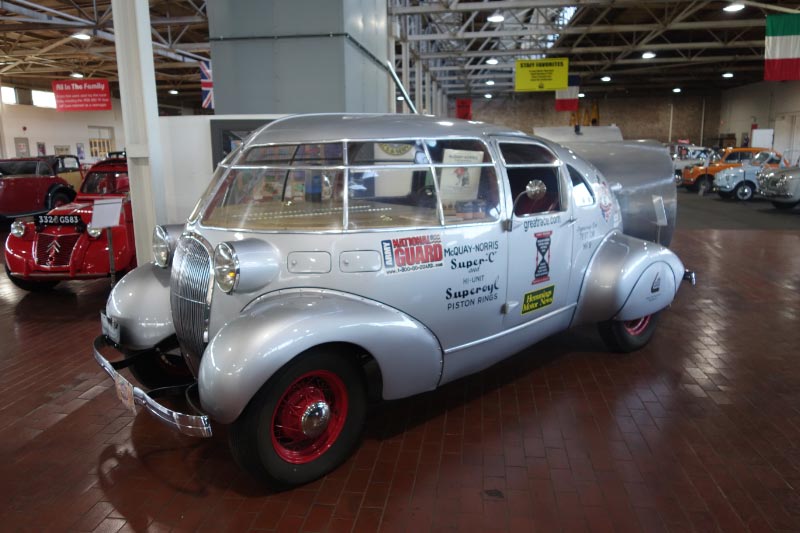
This vehicle was created as a promotional vehicle for the Mcquay-Norris Company of St. Louis, Missouri, which manufactured replacement pistons, rings, bearings, and other automotive parts used to rebuild an engine or chassis. Six cars were built for promotional purposes but more importantly they were used as test cars. As such, they were equipped with a multitude of gauges mounted on the dash to monitor the performance of various components. The highly advanced, streamlined body design was constructed of steel and aluminum over a wood framework. The curved plexiglass windshield offers a panoramic view–except to the rear. These vehicles traveled extensively across the U.S. and Canada from 1934 to 1940. The driver sits in the middle of the body, and there is room behind the seats for a suitcase and blowby meter (used to measure how well the piston rings and valves are sealing).
1936 Stout Scarab
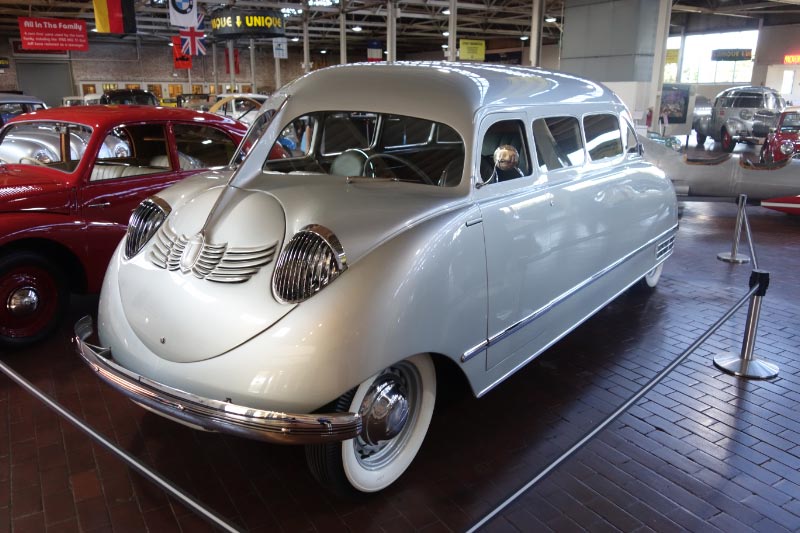
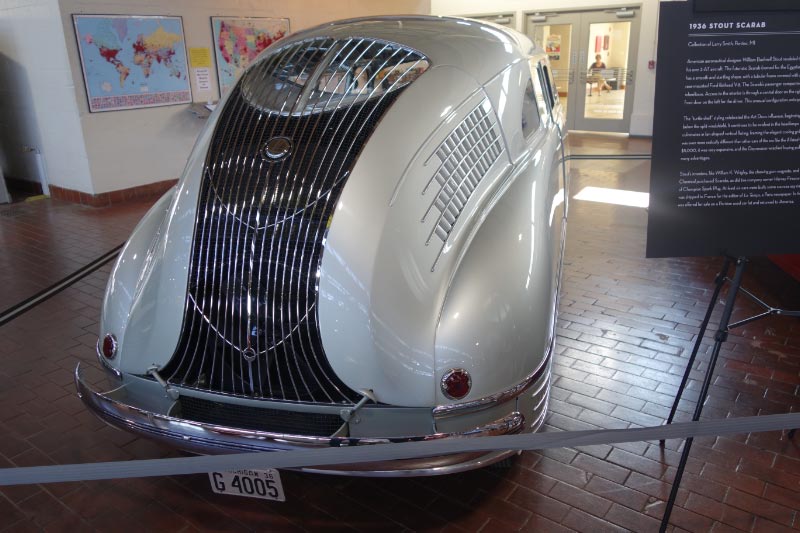
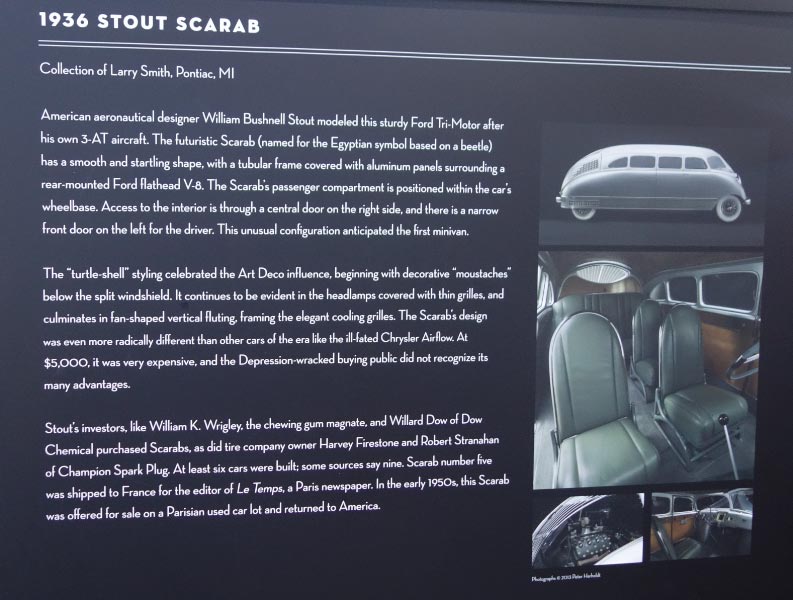
1950 Tatra T-600 Tatraplan
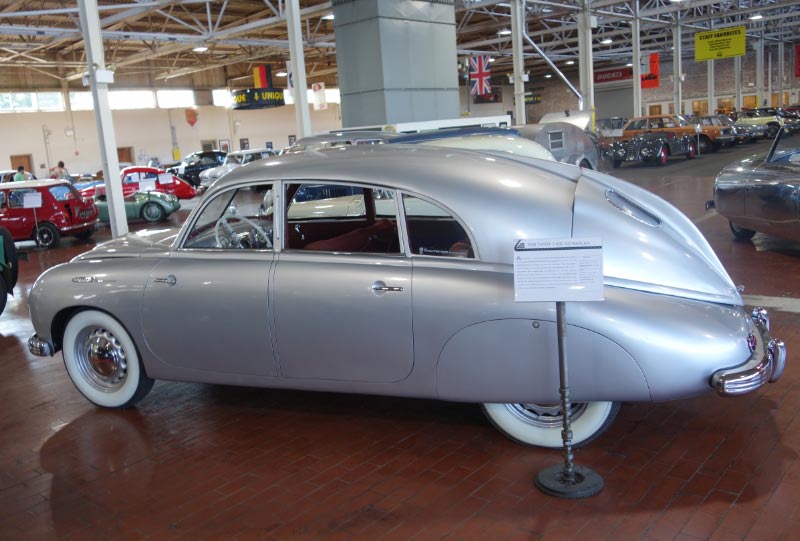
After World War II, Tatra found itself stranded behind the Iron Curtain. Hans Ledwinka was accused of collaborating with the Nazis and was imprisoned from 1945-51. The T-600 was introduced at the 1947 Prague Auto Salon. After World War II, Tatra’s chief designer was Julius Mackerly. He used many elements of the T-87 to design the T-600. You will notice that the T-600 is a slightly smaller, more economical T-87. The engine is a flat 4 cylinder, air-cooled engine instead of the T-87's v8. While the T-87 can maintain a higher top speed, the T-600 is easier to drive because of its lighter weight. From 1947-51, more than half of the Tatraplans produced were exported to countries all over the world. In 1951, production moved to Skoda where all the cars built were for export. Until production ceased in 1952, no luxury cars were produced in Czechoslovakia.
1936 Harris Aerodynamic Steam Car
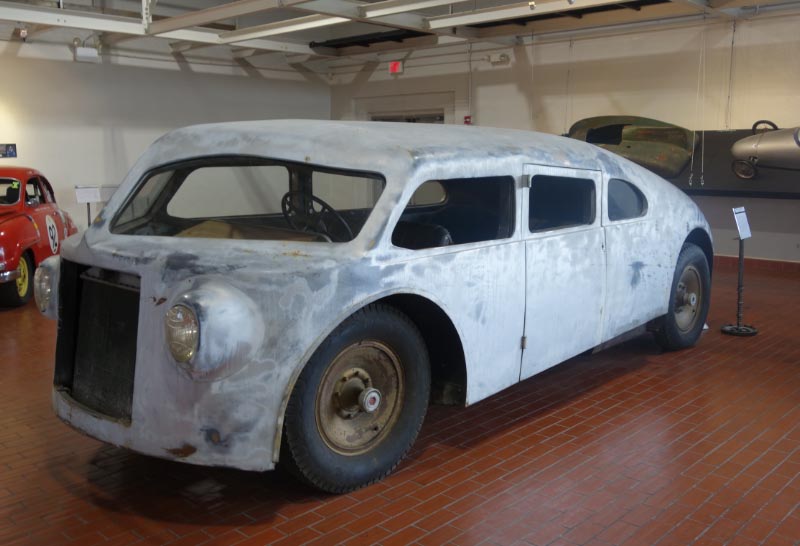
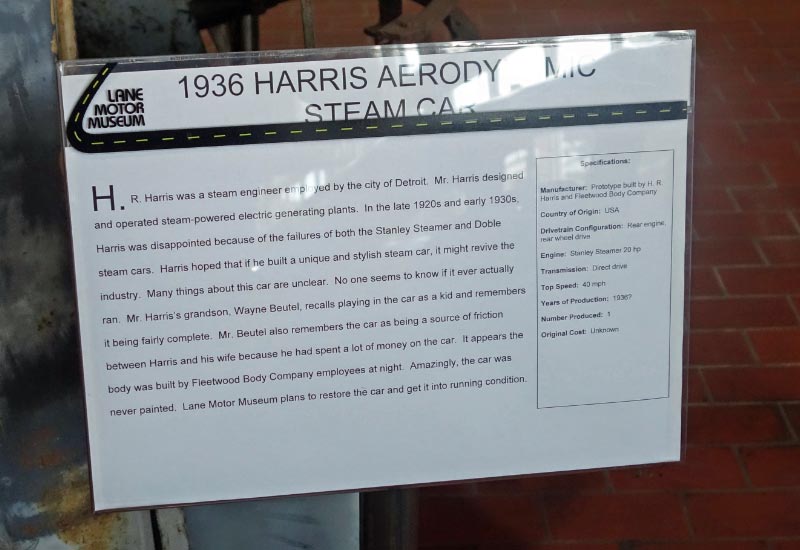
1922 Buick Speedster
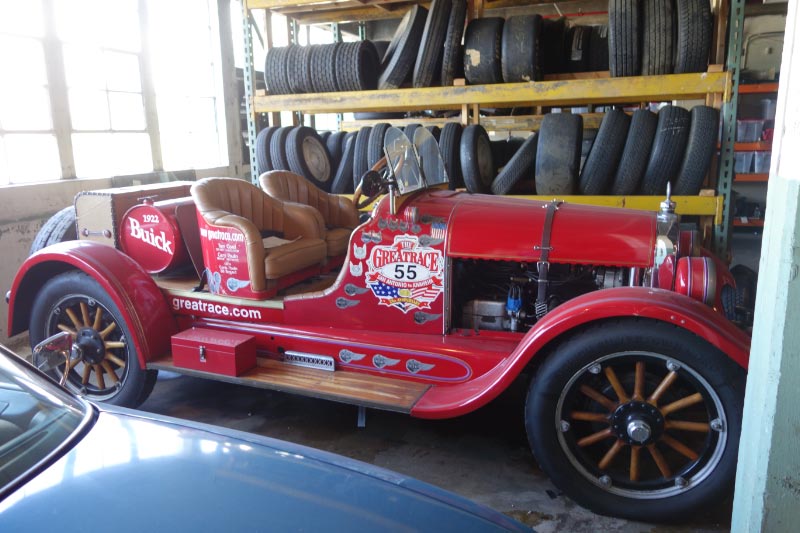
This vehicle, originally owned by Tom Coad, participated in the 1996-2002 Great Race–a rally in which 100 pre-1960s vehicles travel 4,000 miles over some of the most beautiful back roads in America competing for bragging rights and prize money.



Comments
Maybe a bit more on “tin car art”, Howard to let us know how that beautiful image of “Old 16” was created?
Thanks,
Rog Patterson
Rog, here is the original 2009 post:
http://www.vanderbiltcupraces.com/blog/article/friday_april_17_2009_old_16_tin_art_by_david_wasserman
The Lane Museum is a wonderful collection of unusual cars that should be visited by every automobile enthusiast. I have a special affection for the Tatra display because my family had a T-600 Tatraplan in the late 50’s, early 60’s. It was a very unusal car to have in San Diego, California at that time. We used it as a family car and I even took my date to the Senior Prom in it. Tatras were very high quality cars that would compare with Mercedes of the period. Do not miss the Lane Museum if you’re in Nashville.
I am Roz Kroplick’s first cousin (our mothers were sisters), and David Wasserman’s grandson, Gabe Wasserman, is married to my daughter, Kim Green. (They live in San Francisco and have two wonderful children). Gabe inherited some beautiful pieces of “tin can art” after his grandfather died in 1999, and they’re on the walls in their house. I never fail to marvel at the beauty and whimsical nature of David W.‘s artwork. I heartily recommend that viewers go to the http://www.tincanman.net/ website to view David W.‘s beautiful artwork, which is timeless and inspiring. . . . . . . . . .